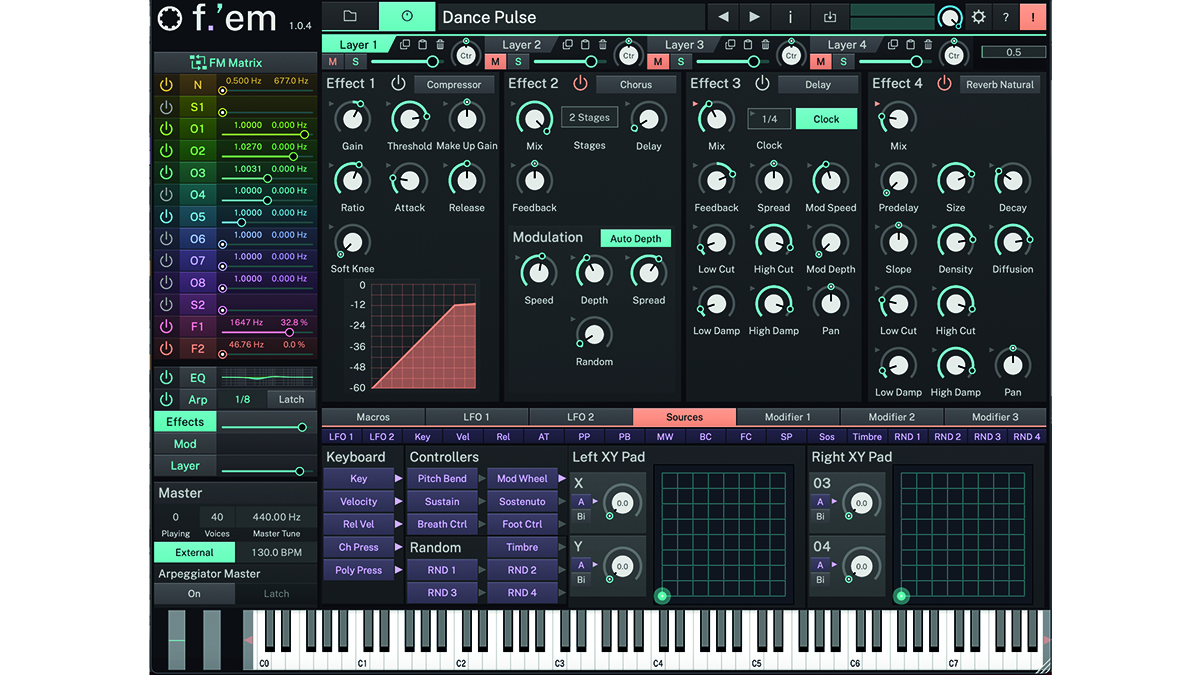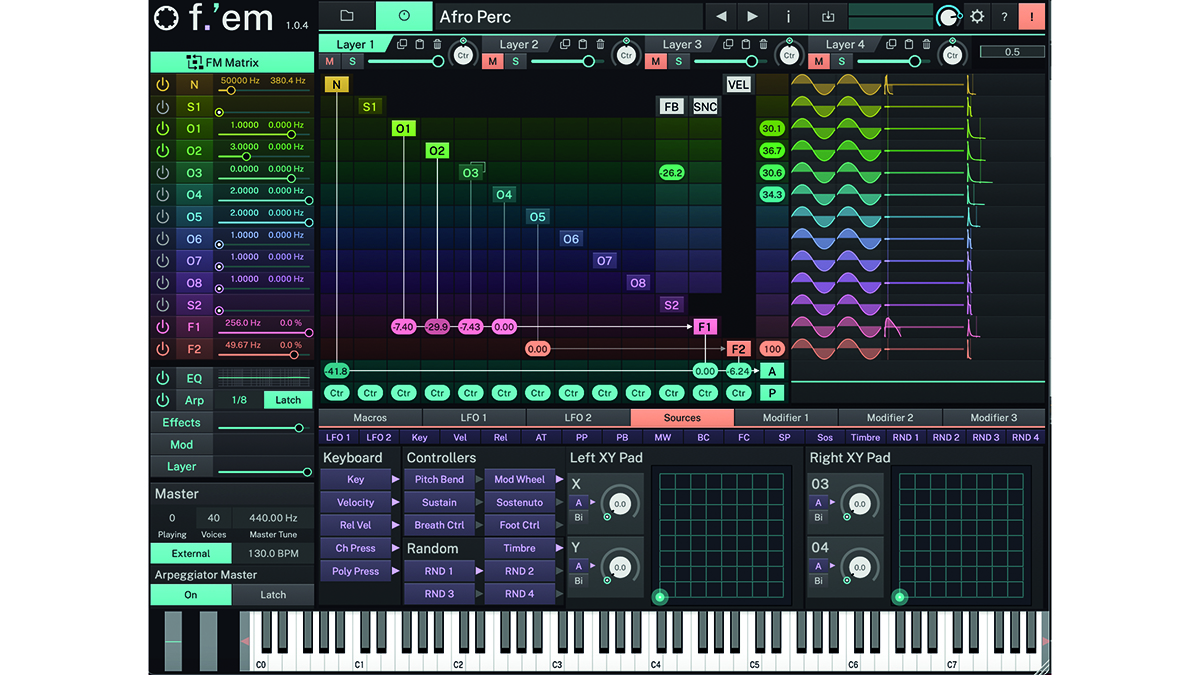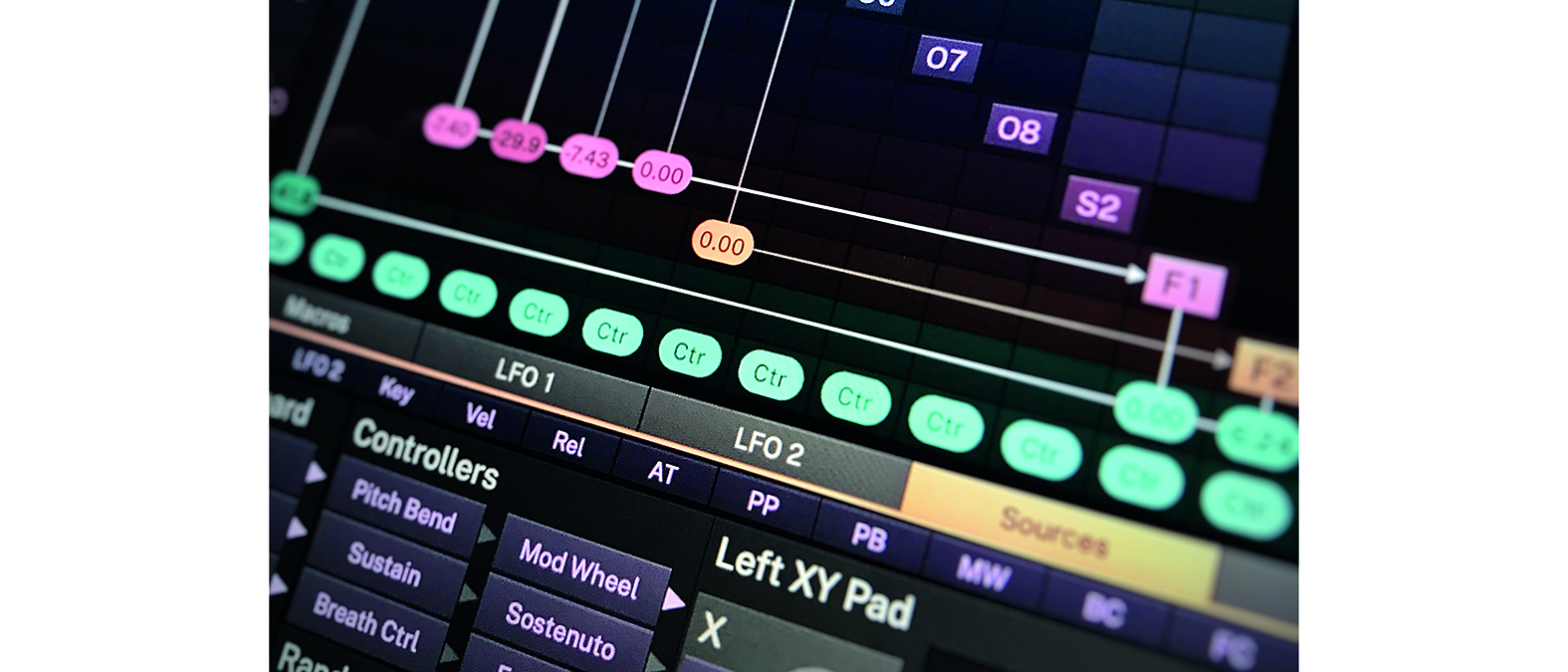MusicRadar Verdict
A hugely powerful digital synth – likely too powerful for some. But for those who brave its depth there’s a mass of potential here.
Pros
- +
Hugely well-equipped synthesis/sample engine.
- +
Routing matrix is a neat and powerful system.
- +
Masses of powerful modulation tools.
Cons
- -
Likely too complex for casual users.
- -
Can be demanding of the CPU.
MusicRadar's got your back
What is it?
For a long time, when it came to FM synth plugins, Native Instruments’ FM8 ruled supreme. With the playfully confrontational F.’em, Tracktion is set on changing that. This new powersynth is easily the most serious FM synth plugin in recent times, and could quite convincingly stake a claim to being the most powerful FM synth ever.
The overall design here has four layers, each containing an 11-operator FM engine. The most noticeable element of F.’em’s design is its central matrix. This customisable grid takes the role usually employed by algorithms in a traditional FM synth, for dictating the assignment and routing of each operator, whether that involves being routed to an output, to modulate another operator or both.
It’s a neat, pleasantly user-friendly system, that essentially comes down to clicking-and-dragging the point between any two operators to apply routing. While, with the potential to employ 11 operators, it can get complex quickly, the nice use of colour in the interface helps keep track of what’s going on.

Performance and verdict
Dig into the operators themselves and there’s plenty of flexibility on offer. The FM operators incorporate elements of virtual analogue in with traditional FM design, offering a choice of waveforms, along with amp and pitch envelopes, plus level and pitch LFOs for each operator.
Along with these eight synthesis operators, F.’em features two multi-sample operators, which can be loaded with sounds from the plugin’s factory library or your own collection.
These operators are similarly equipped to the synth operators, both in that they feature the same pitch and amp modulation tools, but also in the routing capabilities; both sample sources can modulate, or be modulated by, any other operator.
The final operator is a noise source, another nice virtual analogue touch, joined by a pair of analogue-style multi-mode filters. The two filters each come equipped with their own LFOs and envelopes, plus a drive effect, and can be routed in series or parallel using the central matrix.
Even on top of all these individual envelopes and LFOs, there’s a wealth of additional modulation sources, including customisable Flow LFOs, macro controls and a powerful modifier matrix. Each layer is rounded out by an EQ section, a four-slot effects processor and an individual arp.

In short, F.’em is very powerful. It’s hard to think of a better equipped FM synth. This comes at a price however; despite a well laid-out UI and quality presets, this remains a fairly advanced instrument.
It can tax the CPU heavily too, particularly when making use of its full features. Not that this is a huge issue – you can create immensely rich, complex sounds without even scratching the surface. This is a big, powerful soft synth and a deep, inviting well of sound design possibilities!
MusicRadar verdict: A hugely powerful digital synth – likely too powerful for some. But for those who brave its depth there’s a mass of potential here.
Hands-on demos
TracktionSoftware
Specifications
- KEY FEATURES: Four-layer FM synthesiser.
- 11 OPERATOR ENGINE: 8 digital synthesis operators, 2 multi-sample operators, noise operator, 2 multi-mode filters with drive. Four effect slots per-layer. Arpeggiator per-layer. Multiple modulation tools and matrix with modifiers.
- CONTACT: Tracktion
I'm the Managing Editor of Music Technology at MusicRadar and former Editor-in-Chief of Future Music, Computer Music and Electronic Musician. I've been messing around with music tech in various forms for over two decades. I've also spent the last 10 years forgetting how to play guitar. Find me in the chillout room at raves complaining that it's past my bedtime.
“Every one of them said yes without hesitation": Hank Marvin and Roger Taylor have just remade a '60s classic for charity
Do you know where your money goes when you buy a gig ticket? A new report breaks it down
“Every note counts and fits perfectly”: Kirk Hammett names his best Metallica solo – and no, it’s not One or Master Of Puppets










